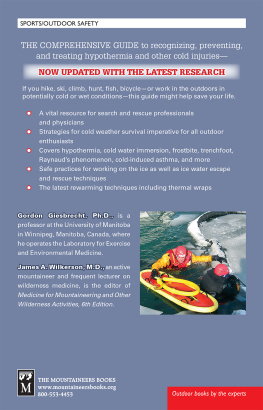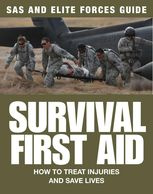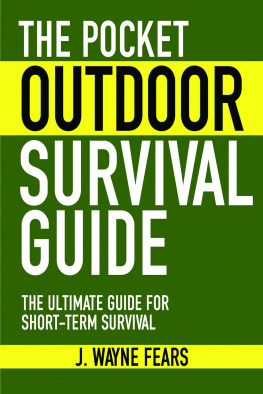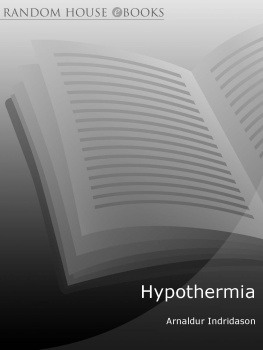Gordon Giesbrecht - Hypothermia Frostbite And Other Cold Injuries: Prevention, Recognition, Rescue, and Treatment
Here you can read online Gordon Giesbrecht - Hypothermia Frostbite And Other Cold Injuries: Prevention, Recognition, Rescue, and Treatment full text of the book (entire story) in english for free. Download pdf and epub, get meaning, cover and reviews about this ebook. year: 2006, publisher: Mountaineers Books, genre: Romance novel. Description of the work, (preface) as well as reviews are available. Best literature library LitArk.com created for fans of good reading and offers a wide selection of genres:
Romance novel
Science fiction
Adventure
Detective
Science
History
Home and family
Prose
Art
Politics
Computer
Non-fiction
Religion
Business
Children
Humor
Choose a favorite category and find really read worthwhile books. Enjoy immersion in the world of imagination, feel the emotions of the characters or learn something new for yourself, make an fascinating discovery.
- Book:Hypothermia Frostbite And Other Cold Injuries: Prevention, Recognition, Rescue, and Treatment
- Author:
- Publisher:Mountaineers Books
- Genre:
- Year:2006
- Rating:5 / 5
- Favourites:Add to favourites
- Your mark:
Hypothermia Frostbite And Other Cold Injuries: Prevention, Recognition, Rescue, and Treatment: summary, description and annotation
We offer to read an annotation, description, summary or preface (depends on what the author of the book "Hypothermia Frostbite And Other Cold Injuries: Prevention, Recognition, Rescue, and Treatment" wrote himself). If you haven't found the necessary information about the book — write in the comments, we will try to find it.
A vital resource for search and rescue professionals and physicians as well as
outdoor enthusiasts
Adds four new chapters to cover additional cold injuries and strategies for survival
Hikers, skiers, climbers, hunters, fishermen, bicyclists, and lost children-all are potentially at risk of hypothermia or other cold injuries including frostbite and trenchfoot. Cold water immersion is also a major cause of death in boating accidents. Yet as shown in anecdotes from the updated second edition of Hypothermia, Frostbite, and Other Cold Injuries, many people have died unnecessarily, succumbing to cold effects long before hypothermia sets in.
This compact, comprehensive book covers the causes and effects of hypothermia and other cold injuries, and tells how to prevent, recognize, and treat them. The new second edition includes expanded coverage of how the body loses heat and the latest rewarming techniques such as thermal wraps. There are new chapters on cold water drowning and covering additional cold injuries from Raynauds phenomenon to cold-induced asthma.
Other new chapters present strategies for cold weather survival, plus safe practices for working on the ice and ice water escape and rescue techniques
Gordon Giesbrecht: author's other books
Who wrote Hypothermia Frostbite And Other Cold Injuries: Prevention, Recognition, Rescue, and Treatment? Find out the surname, the name of the author of the book and a list of all author's works by series.


























